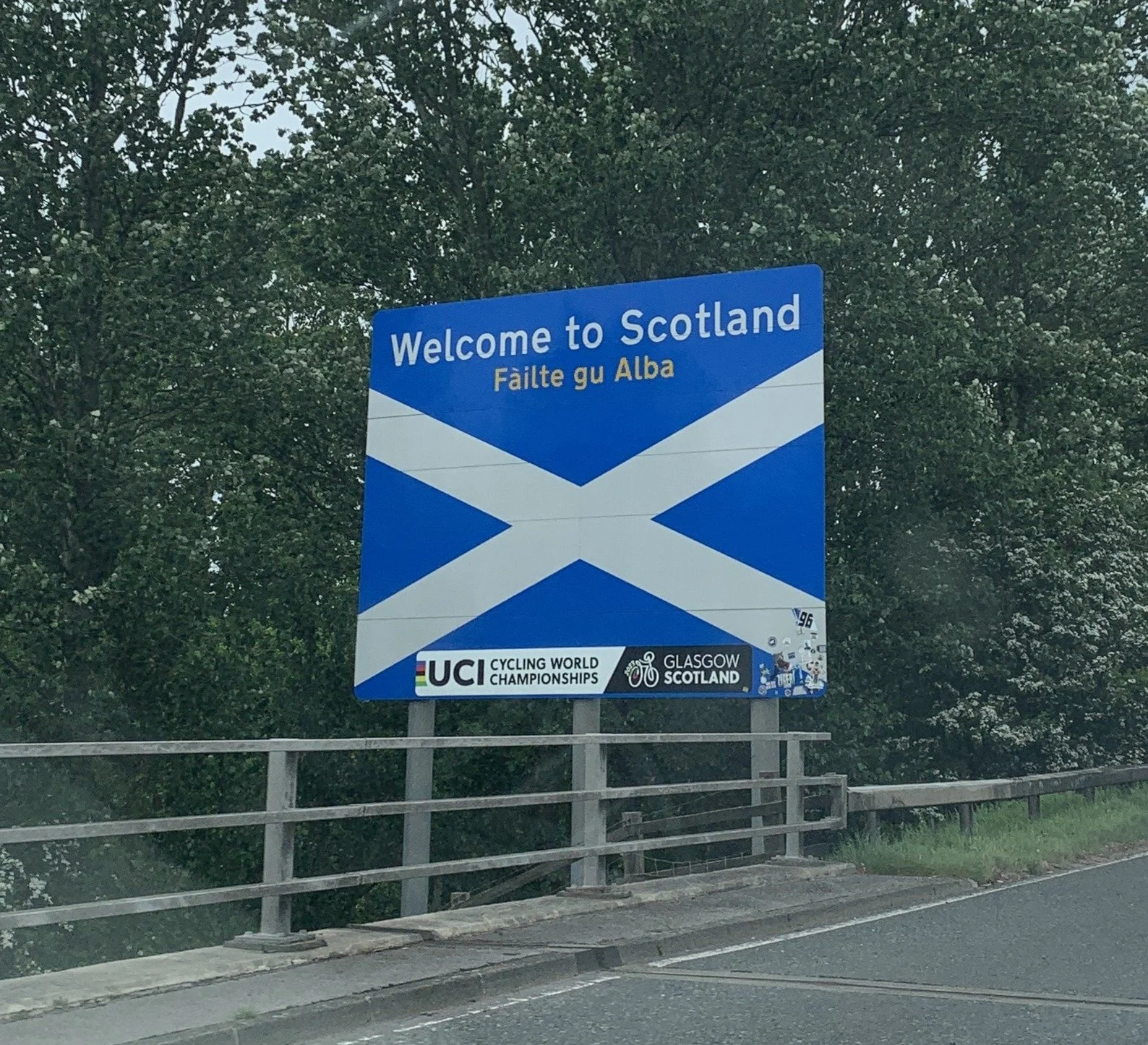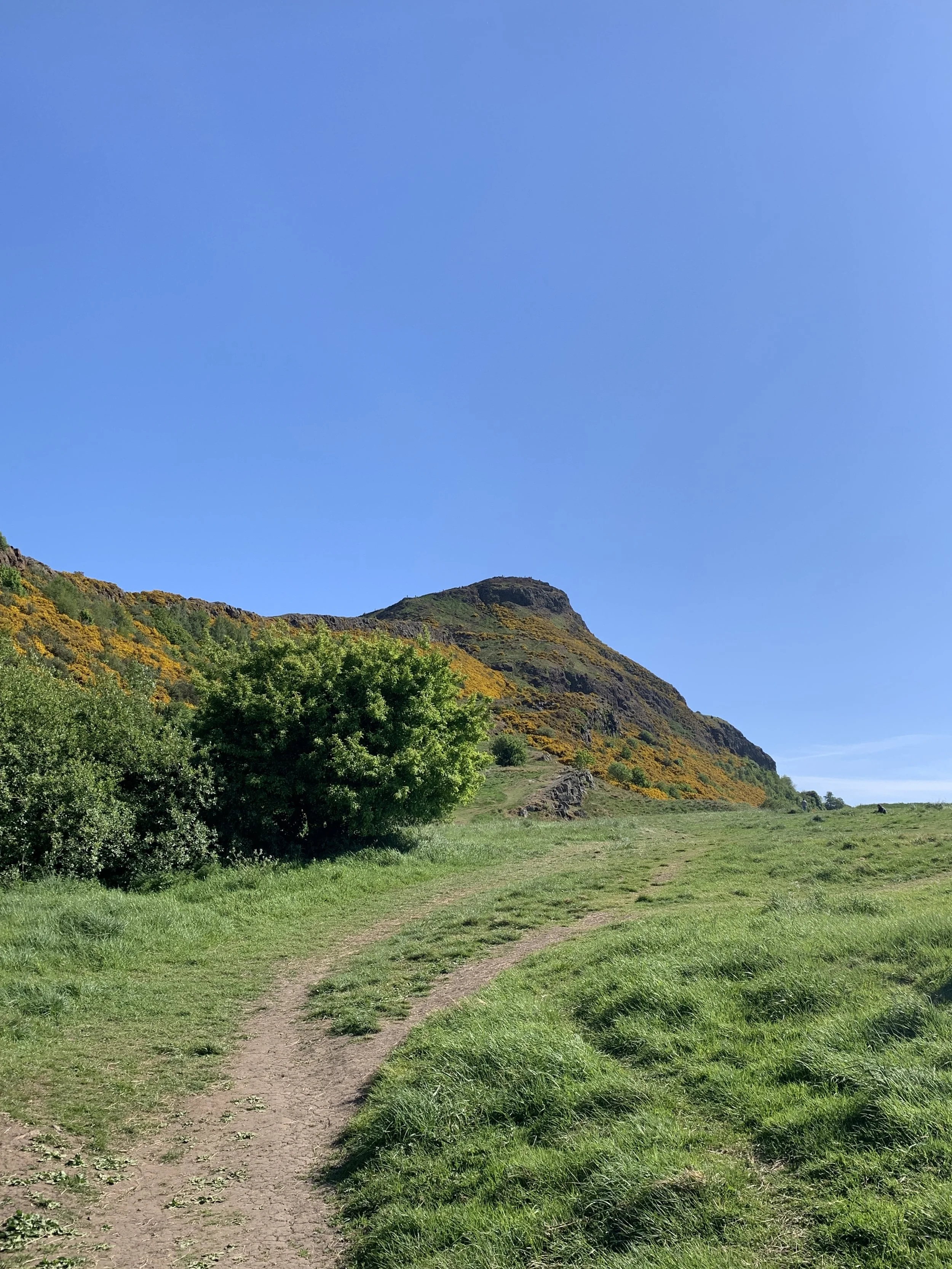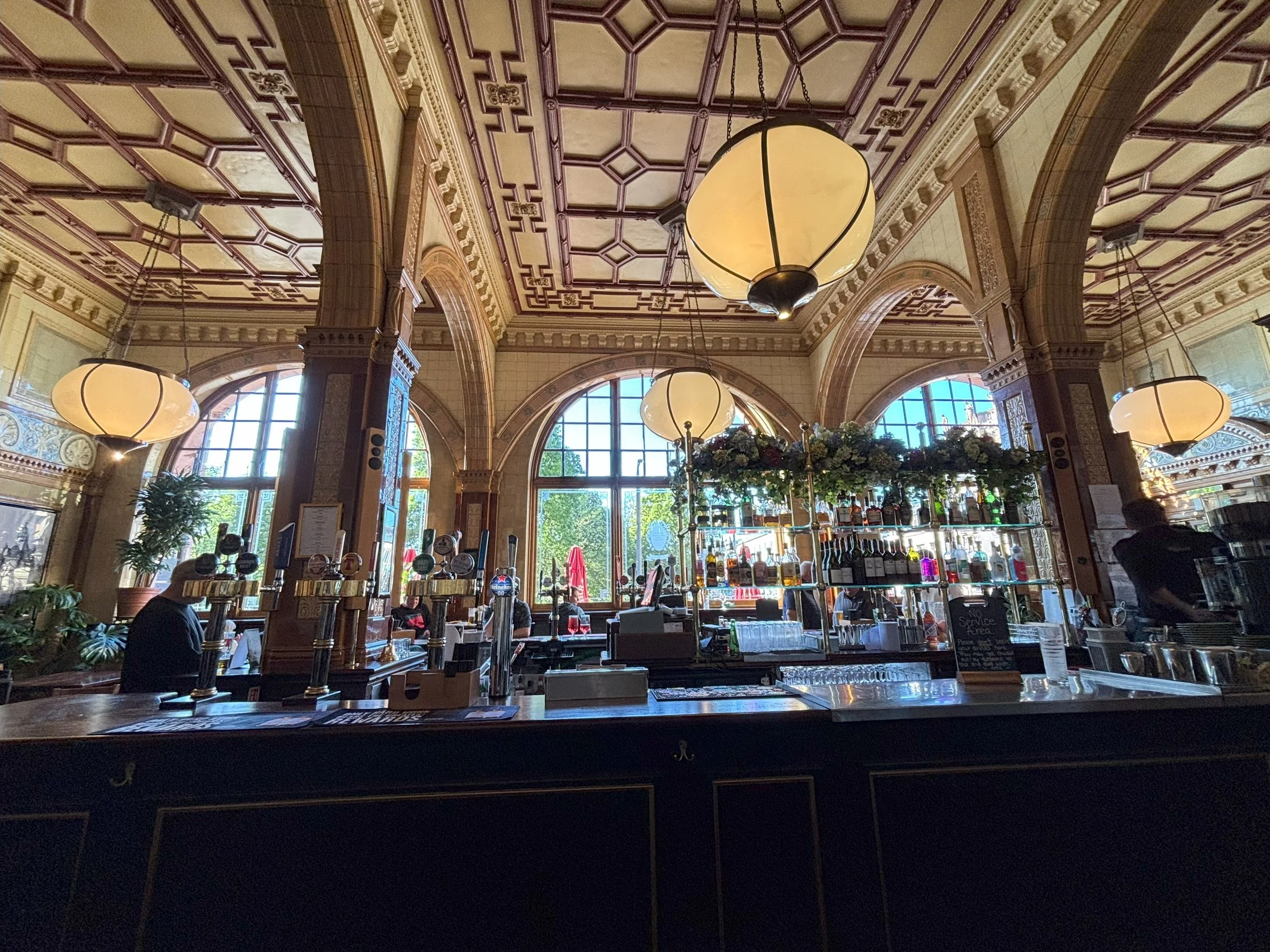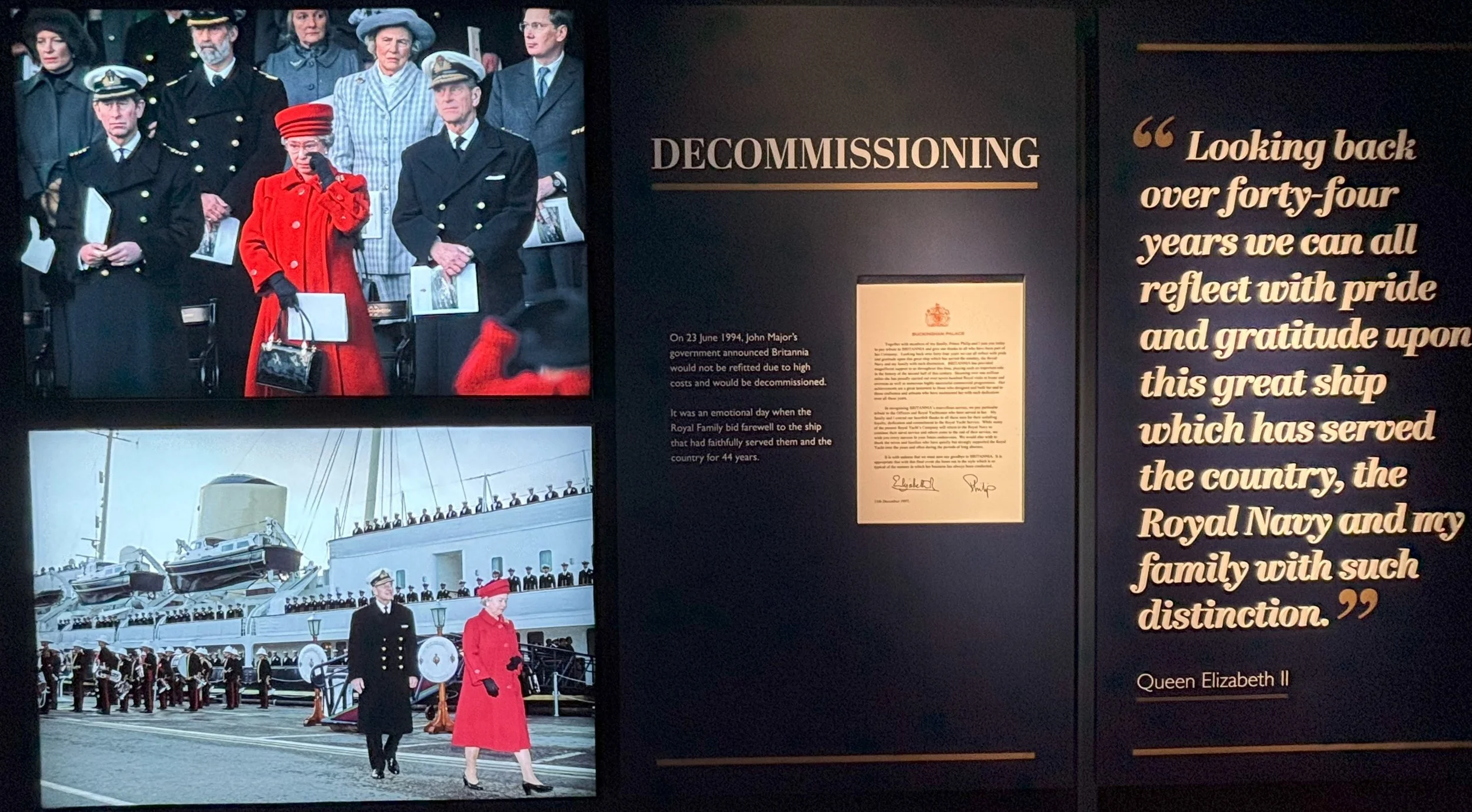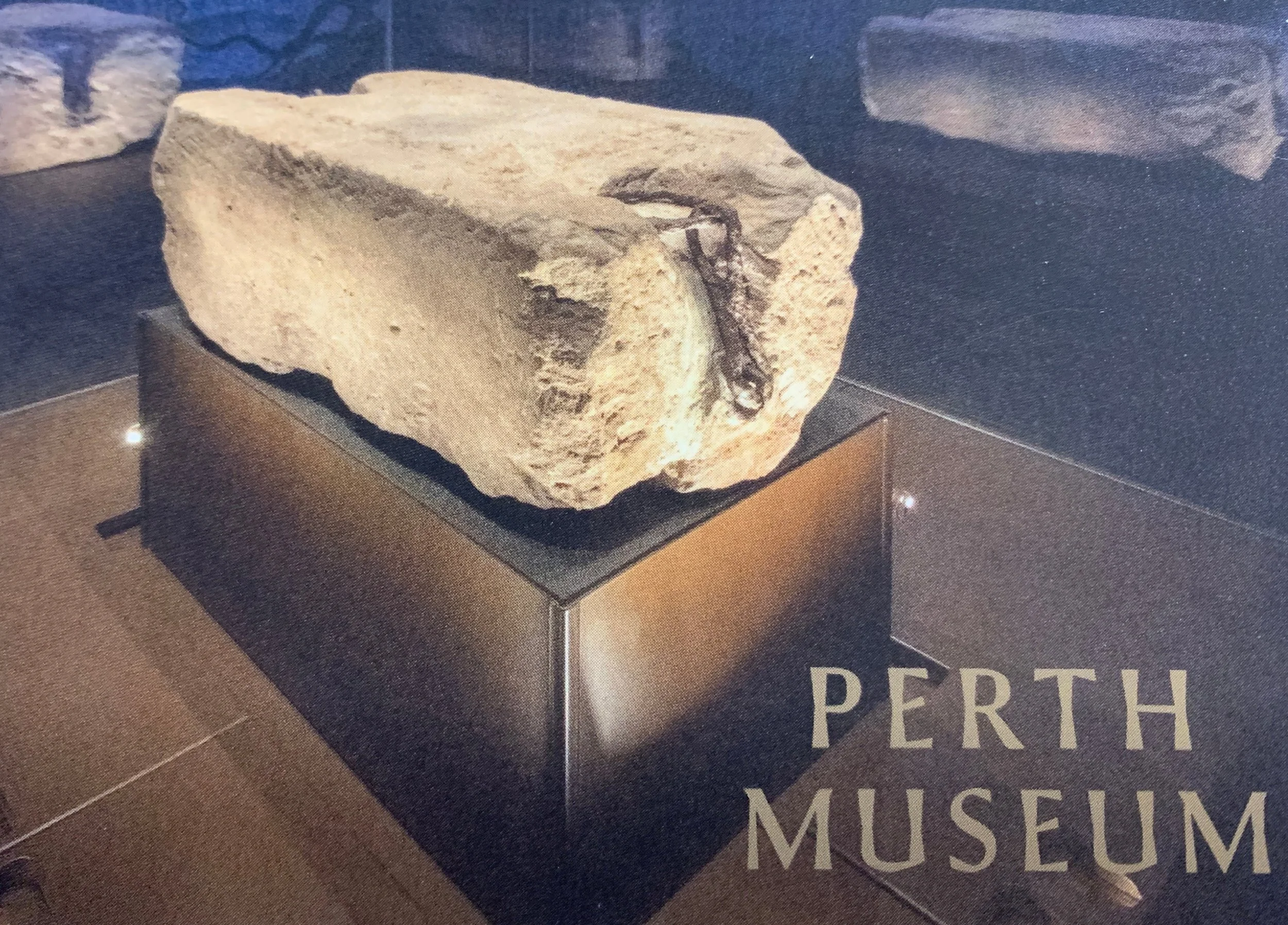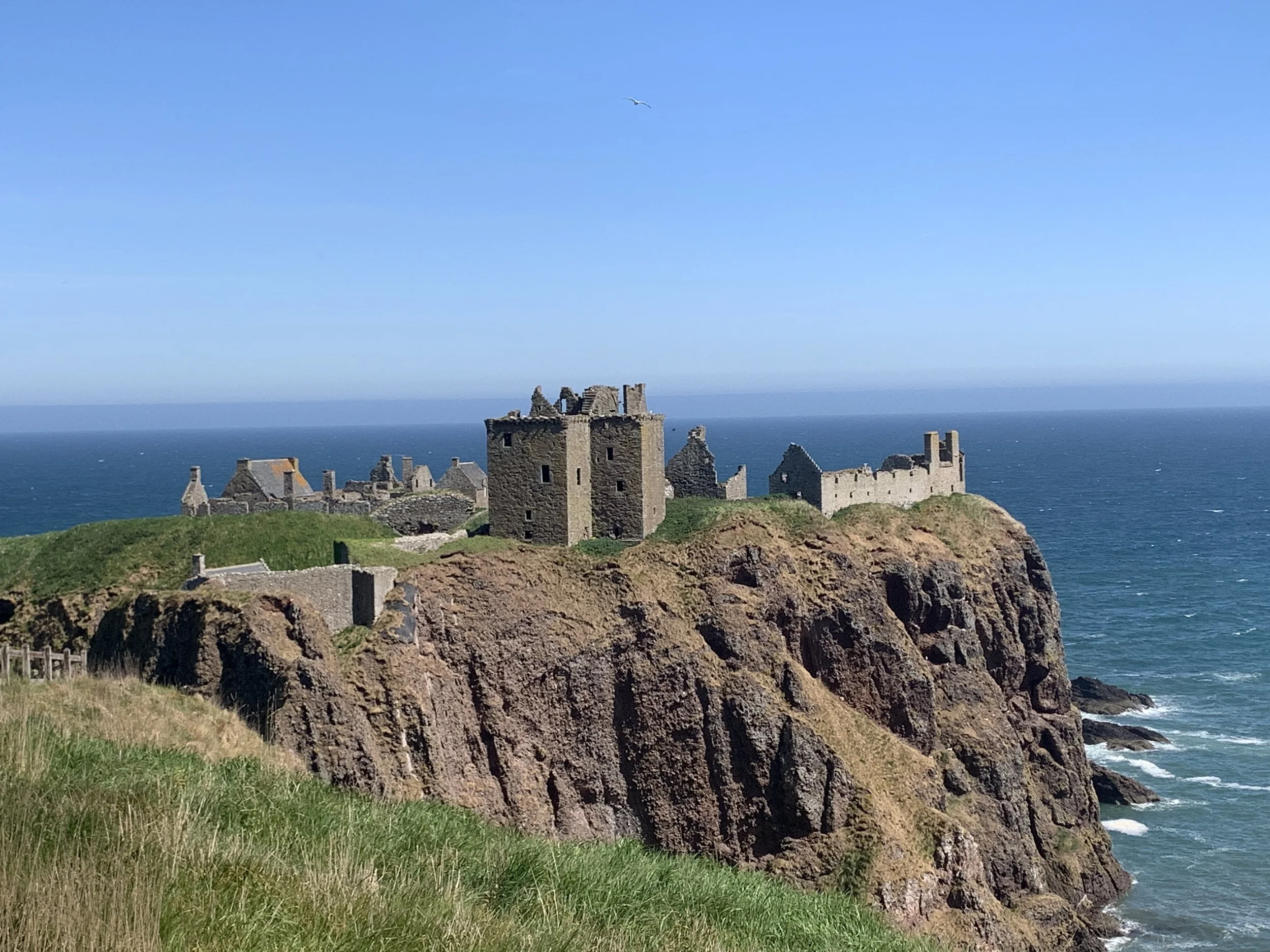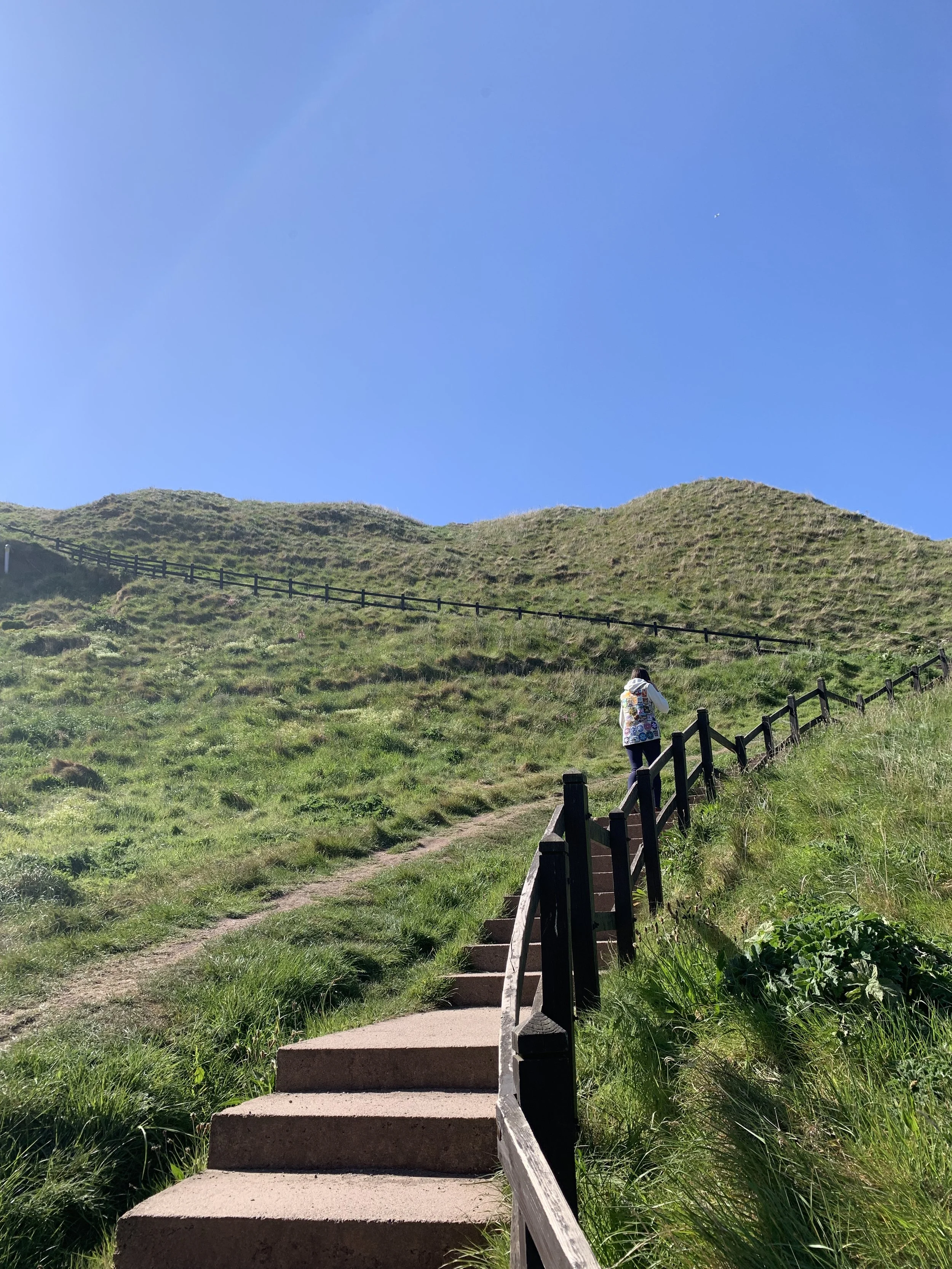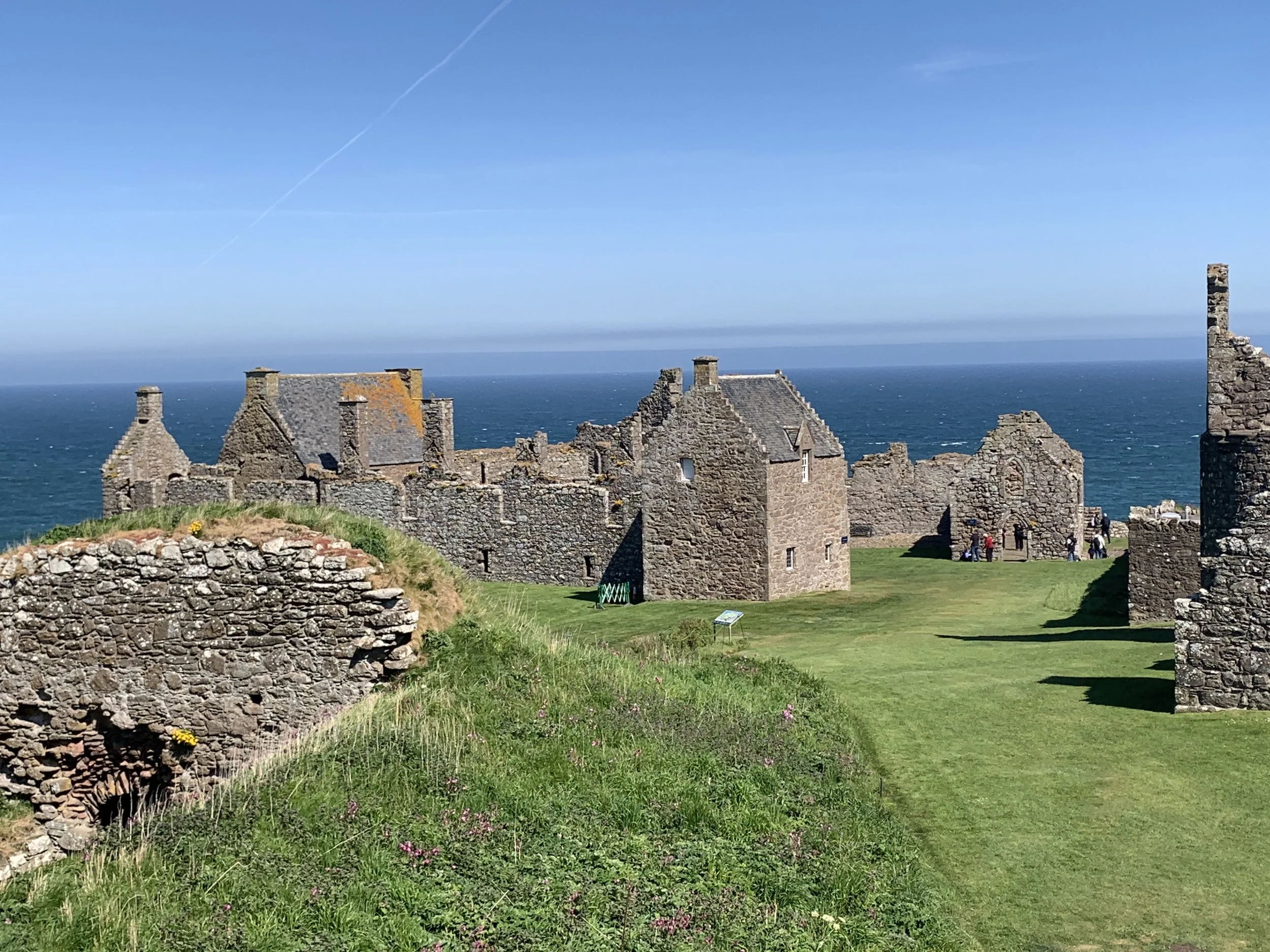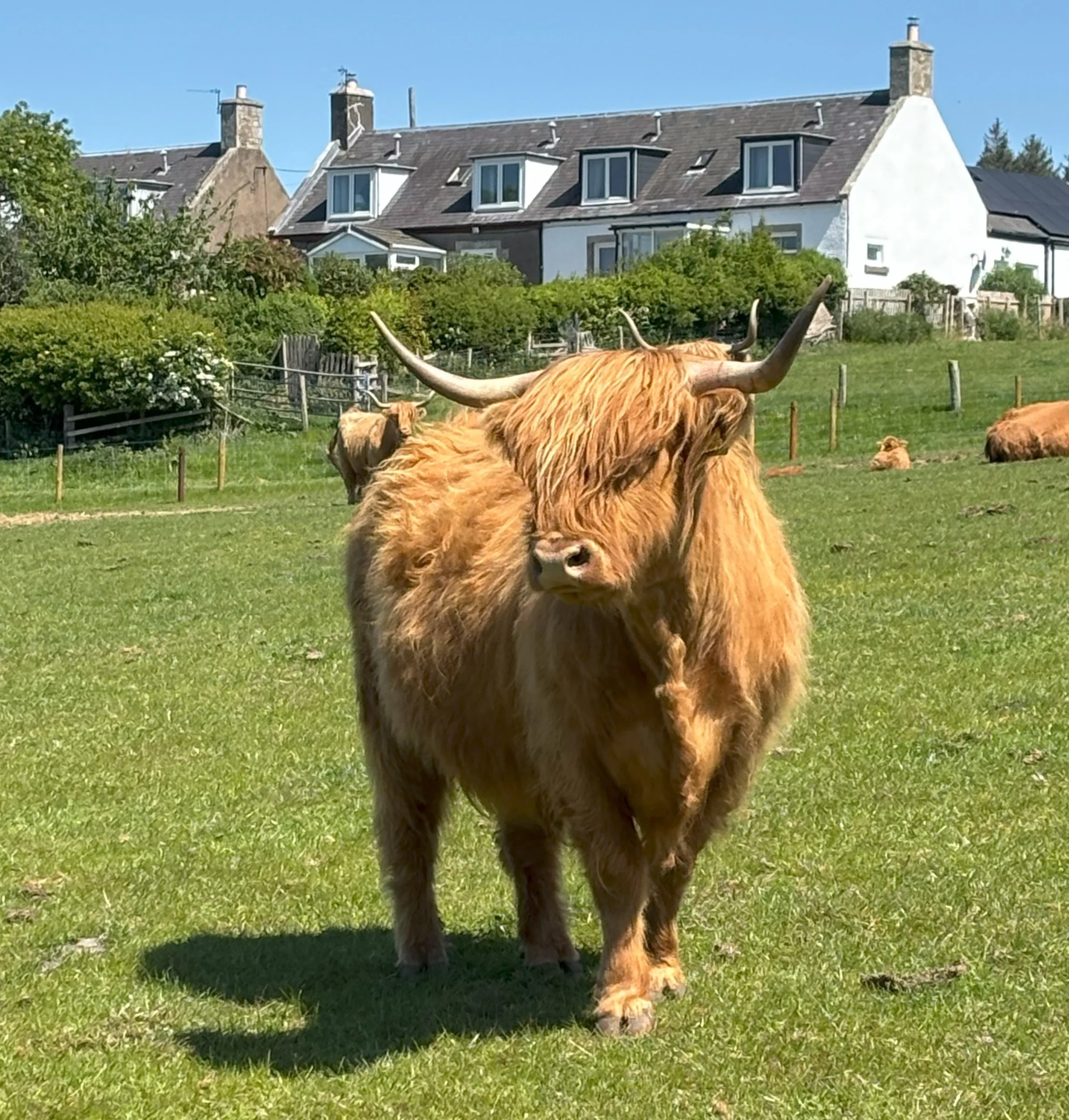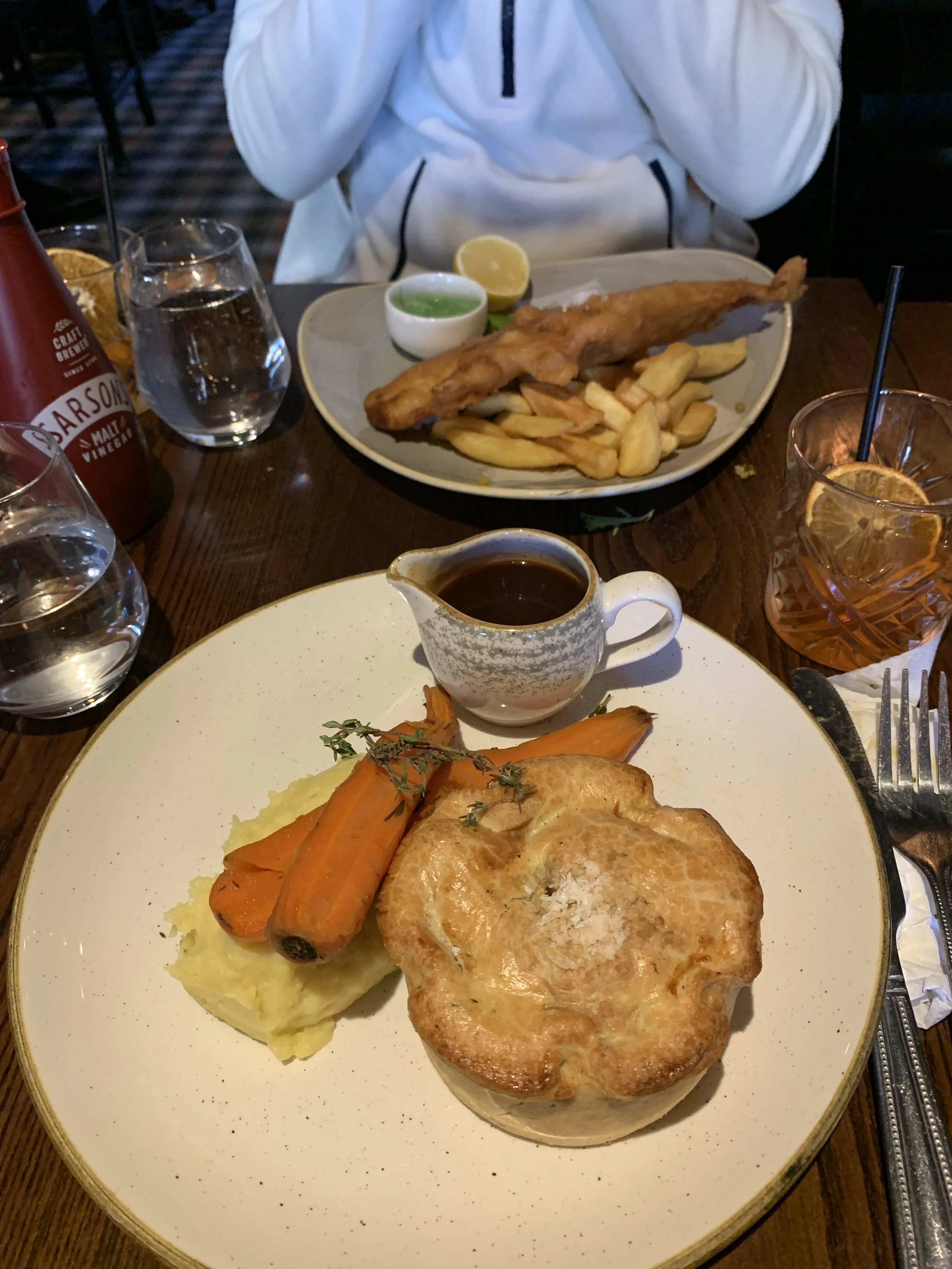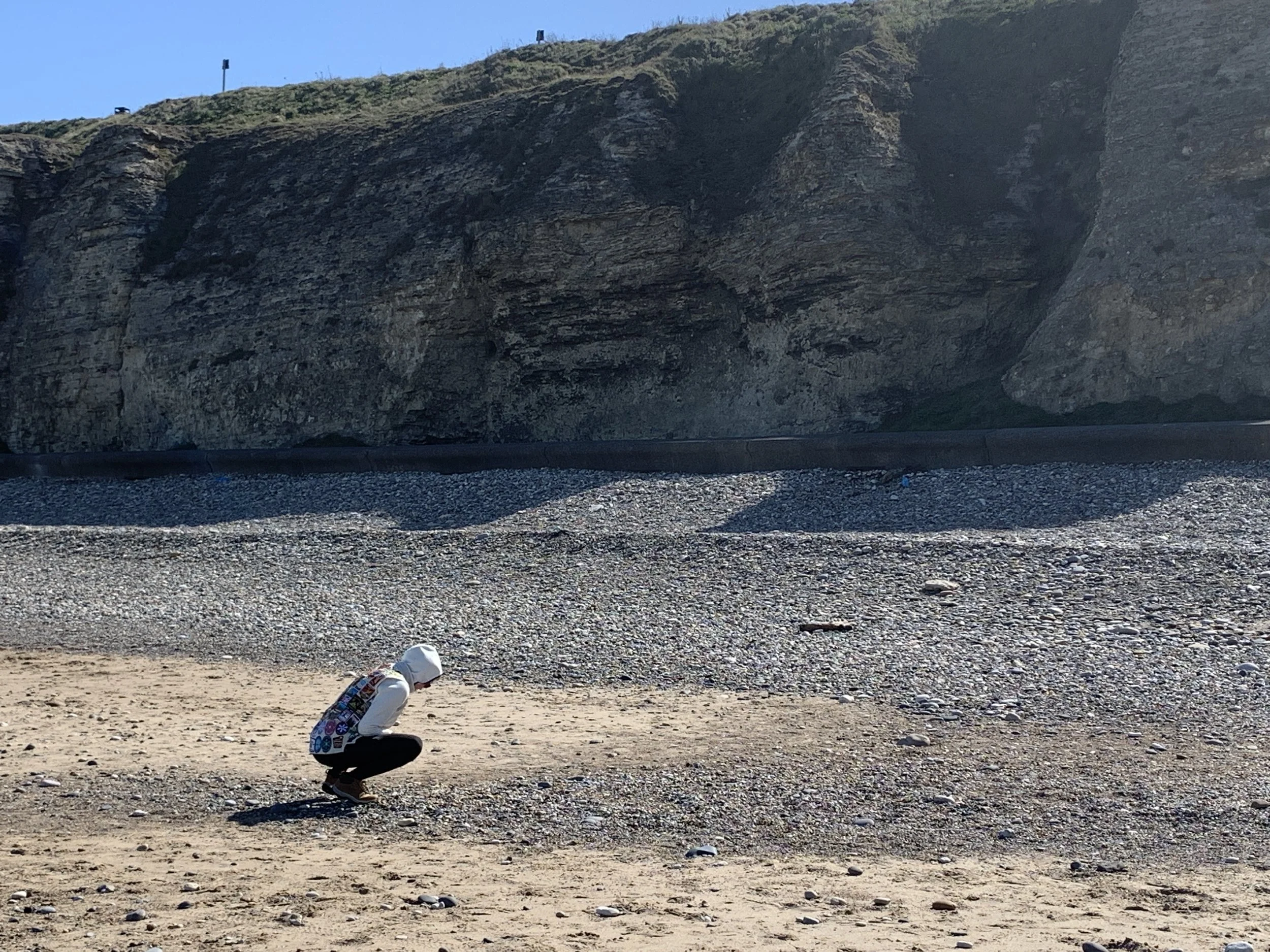Scotland
On Wednesday, May 14, we headed to Edinburgh, Scotland, a little over 2 1/2 hour drive. An odd thing about Edinburgh, while there you only walk up, streets, sidewalks, stairs passing themselves off as sidewalks, always going up. OK, physically impossible, what goes up must come down, but if your a walker, it sometimes feels that way.
Parking can be challenging in Edinburgh, but we found a garage which charged a daily rate. We stayed 3 nights at the Princess Street Suites. We chose the Princess Street Suites for 2 main reasons, first location, we were close to a convenient hiking opportunity, Edinburgh Castle, and public transportation. The second reason was the room came with a kitchen, and what we were really looking for, a washer and dryer. We figured by this point in the trip we would need clean laundry.
One warning, the washer/dryer is one unit. The wash cycle took 2 1/2 hours, and the dryer was close to 4 hours a load. No, those times are not mistakes, however, we set a load to wash before we left for the day, then before going out to dinner, set them to dry. Over the course of 3 days, we had plenty of clean laundry to finish our trip.
By the time we parked the car, checked in, and got the first load of laundry going, it was after lunchtime. Our plan was to get in a hike. Arthur’s Seat is an ancient extinct volcano in a group of hills which make up most of Holyrood Park, located about a mile east of Edinburgh Castle and about a fifteen minute walk from our hotel. The hill’s summit is 823 feet, is a semi easy climb, and very popular with hikers.
It’s a steady ascent, and there is a section toward the top paved with stones. The views of the city and the surroundings are worth the hike.
The first night in Edinburgh we couldn’t find a place to eat, though there were plenty in the area. You either needed a reservation or wait for an hour. I’m guessing there was a lot of business travelers at the time, because we didn’t have too much of a problem the remainder of the stay. We lucked out though, after walking a bit we found, Tiles Bar & Bistro. Nicely appointed and good food.
I tried a Tetley’s, to go with my dinner and found it a very smooth beer. The dinner was very good, dessert was fabulous. A sticky toffee pudding, drenched in toffee sauce, and served with a side of vanilla ice cream.
The other is called Cranachan, a traditional Scottish creation. It has the consistency of a trifle, made with cream, fresh raspberries, Scottish oats, and whiskey.
Her Majesty’s Royal Yacht Britannia
On Thursday, 5/15, we spent the morning at Edinburgh Castle, which I covered in its own section. I said in the beginning, we try to leave free time to do things on the spur of the moment. With most of the afternoon left, we decided to hop on the tram and travel to Ocean Terminal, Leith, where the Royal Yacht Britannia is berthed. I will trumpet the public transportation again, the tram line was about a 10 minute walk from the hotel, the tram cars were clean and ran regularly; I don’t think we waited more then 8 or 9 minutes. The trip from Edinburgh to Leith took less than 20 minutes.
The royal yacht was brought into service in 1954. Before its retirement in 1997, it logged over a million nautical miles. There is a great chart showing a timeline of the more than 600 ports visited, in 135 countries. There is a hallway leading from the visitor’s center to the yacht, with pictures of the yacht, royal family, and crew. There was an old salt and veteran of the crew answering questions.
The officers for the royal yacht are appointed, for about 2 years, but the crew were volunteers from the general service of the Royal Navy. After a year of service, they were eligible to be admitted to the Permanent Royal Yacht Service as Royal Yachtsmen, and can serve until they choose to retire. The gentleman answering questions stated the duty was so good, almost no one left after the probationary year. Someone had to retire or die for an opening to become available.
The accommodations were splendid to say the lest, you felt more like you were at a high end country cottage than on a ship. You are offered audio tours at many of the places we visited, many times we pass, but this time we didn’t. As you walk along, you will see numbered signs to start the the audio for that section. The devices are very easy to use. Some rooms were glassed off, the bedrooms and personal rooms of the royal family, others such as the main gathering areas and crew compartments you could walk though. There is the officer’s mess, the silver pantry, the main dinning room for state dinners, and the aft living room which belongs in a country estate.
The tour will point out different items and curiosities in the rooms, with their origin, purpose, or the associated tradition. You get to see everything from the bridge to the engine room. You pass photos of the royal family at play on the walls. All the pictures are full of smiles, a family enjoying each other.
There is a spot where the crew tucked away a Land Rover for the royal family to explore a port of call.
No dingy for the Queen to row ashore, this launch transported the family or allowed private boating time.
The size of the crew to run the ship and serve the family was incredible; 21 officers and 250 Royal Yachtsmen. You get a sense why the crew loved the duty. The officers lounge was a floating pub, even the enlisted crew had nice quarters, and the sickbay was state of the art for it’s time.
There was one photo in the hallway when you first head to the yacht, which is particularly touching. The fate of the yacht was a political decision. The Conservative Party announced the yacht’s retirement in 1994, stating a refit would be expensive and only prolong the ship’s lifespan by 5 year. The party did commit to replacing the yacht if returned to power during the next election cycle.
In 1997, John Major’s Conservative party lost to Tony Blair’s Labour party in a landslide, and stated public funds would not be used to replace the yacht. The last episode of season 5 of the television series, ‘The Crown’, named ‘Decommissioned’ , talks about the event. The decision was not popular with everyone, the old yachtsman I talked about at the beginning, partially spat Tony Blair’s name as a curse word.
The photo was taken at the 1997 decommissioning ceremony, it shows a very emotional Queen Elizabeth. For most of my life the Queen was the only British monarch I knew. With very few exceptions, she held the stoic, serious demeanor of her office. I realized I wasn’t looking at the Queen, but a woman and mother who was watching one of her favorite places disappear. A place of so much joy with her husband and children, away from public scrutiny and the demands of the crown.
The Stone of Destiny
The Stone of Destiny, also know as the Stone of Scone (pronounced ‘Skoon’), was displayed at Edinburgh Castle, from 1996 until 2024, then it was moved to the Perth Museum, approximately 40 miles north of Edinburgh.
This was bit of a side trip the next morning to see a rock, but the history behind the stone made me want to look at it with my own eyes. A small pamphlet added to the Edinburgh guide book states in medieval times, the stone was kept at Scone Abbey, just outside Perth, and was used in the coronations of Scottish kings.
In 1296, King Edward I of England seized the stone, taking it to London and placing it under the coronation chair, to symbolize his authority over Scotland. It did not permanently return to Scotland for 700 years.
The stone did return to Scotland for a short time in 1950. On Christmas Day, four Scottish students, 3 men and 1 woman, stole the stone from Westminster Abbey. On April 11, 1951, it turned up at the high alter of Arbroath Abbey. You are not allowed to take a photo of the stone, but I took a picture of a postcard, to show you how it is displayed. It now lives permanently in the Perth Museum. Geological research stated the stone was most likely quarried near the town of Scone, which is a part of the city of Perth, so the stone, at long last, has returned home.
Dunnottar Castle
Another day, another castle. We drove to Dunnottar Castle, which has one of most striking locations on a rocky outcrop jutting into the North Sea. This castle is in ruins, most roofs have long disappeared, but there is plenty remaining to give you a real sense of the place.
As a castle, you get the sense of trying to lay siege to the place. The picture to the right, shows how you approach the castle today on the landward side, with stairs (yes, of course there are stairs), added for your comfort. Imagine forcing yourself down this slope, then attacking a heavily fortified gate.
Once you negotiate the outer defenses, first descending the long approach, then ascending stairs past the gateway and the pends (steep covered passageways, which would have been lined with defenders), you come out on a grassy plain to the interior.
As you walk through the brewery, stables, smithy, chapel, large storehouses, bakery, and private houses, you get the sense the castle may have been one of the more comfortable places to live at the time.
The keep was constructed by Sir William Keith in the 1390s and is the most prominent building. The views of the North Sea and beaches are wonderful. You can see the main hall on the first floor, with the kitchen fireplace still in place. Stairs led to the second and third floors, which would have been the master bedroom and guest chambers. It’s a great location to stroll through the past.
Highland Cows
My wife wanted to see some ‘Highland Coos’, this variety of cattle is distinguished by their long fluffy coats, which makes them adorable. Since she went with me to see a rock (Stone of Scone), I didn’t have a problem going to see some fluffy cows.
We were buying our tickets, when one of the workers mentioned we arrived at a good time, one of the cows had recently dropped a calf. We first thought he meant a couple of weeks ago, in fact, it was 45 minutes ago. The little thing hadn’t even figured out how to stand yet. Mother and calf were right along the fence line, so we could get up close, and the calf gained his feet just as we were walking up to him.
Not everyone will want to invest the time for a side trip along narrow English country roads to see cows, but come on, how stinking cute are these guys?
At this point in the trip we started going back to dishes we wanted to have again before leaving. We found a place called Howies, nice place with a good sized menu.
I went with the steak pie with potatoes and a veggie. Coming from the US, which has some of the best beef in the world, I enjoyed the meat selections I found in the UK. The steak pie came with a hardy gravy I was fond of, and went well with my ale of choice for the evening, Newcastle Brown Ale. My wife went with the classic fish and chips.
For dessert, my wife ordered the Howies famous banoffee pie; with a biscuit base, toffee, banana, whipped cream, and toasted almonds. I couldn’t pass up the hot fudge sundae; with brownie pieces, toasted pecans, and whipped cream.
Sometimes when you spend the time and expense to take a trip, you hope you don’t build up your expectations so much, that in the end, you are ultimately disappointed. Our exploration of Scotland met, and exceeded our hopes, we have already talked about a return visit.
Seaham Beach
It was time to head back south, with a quick overnight at Scarborough. My wife is a sea glass hunter and good at it. As we headed back to London the next day, we built in a side trip to a local beach and hit the jackpot. [What? What do you mean don’t tell them? You can’t keep all the best sea glass places to yourself. No, no, I’m telling them.] Seaham Beach, England, is a mile long stretch of coast from the harbor wall to the north of town. [Ouch…. that hurt.]
There is parking near a restaurant where you first enter and you can look down on the beach as you walk along the sidewalk, descending to the beach itself. It was a nice break in the drive to walk along the shore and get the salt air in your lungs.
As far as the haul, very good, not only in quantity, but a nice variety of colors.
